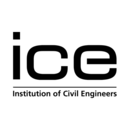How to make projects off-site ready
In 2019, UK government departments will favour bids for construction contracts that offer off-site manufacturing. Gavin White and Andrew Mather of Ramboll offer guidance to civil engineers on how to make projects ‘off-site ready’.
Contents |
[edit] Introduction
Off-site construction encompasses a huge range of disciplines and systems. From factory made concrete, steel and cross-laminated timber components to facade units complete with windows and balconies and modular plant rooms.
However, understanding the off-site benefits for a particular project can be challenging – and only fully realised through a co-ordinated and detailed approach.
While knowledge of off-site construction has been developing in the industry for many years, it remains a diverse and fragmented market.
Realising the benefits of off-site manufacturing for a particular project requires a project-specific, holistic review based on important lessons learned over the past decade.
[edit] Understanding constraints
Off-site construction will only deliver value if its constraints are fully understood and lead the design approach.
These constraints can be of manufacture, handling, transportation, lifting or installation, or project site-specific criteria.
Each part is important and should not be overlooked to avoid expensive bespoke solutions late in the project.
The constraints of off-site construction must also be considered holistically by all engineering disciplines. Acoustics, daylight assessments, sustainability criteria, facade details, and more must all be developed closely with the architectural, structural and mechanical, electrical and plumbing (MEP) designs from an early stage.
Furthermore, the technical design must align with the procurement, cash flow, supplier availability and client’s funding mechanism.
[edit] Off-site reviews
Understanding constraints and involving all disciplines are the basis of Ramboll’s project-specific ‘off-site reviews’ that we are now offering for free on their website.
These are in-depth holistic reviews to find the right off-site systems for a project and culminates in a score for how ‘off-site ready’ the project is. This provides an immediate and comparable indication of the relative merits of different techniques.
A recent example application is the Victoria Quarter in Ashford, Kent. This residential development by Neighbour consists of seven buildings of six to seven storeys, with the majority of flat layouts standardised.
Taking into account the client’s aims for the site and key drivers, Ramboll used digital tools linked to their off-site technical database to undertake rapid option assessment of the building forms for the site, ranging from in situ concrete floors, walls and columns to fully fitted steel-frame modules. A master planning tool then determined the off-site approaches that best aligned with the client’s needs.
Alongside technical analysis, the overall approaches to off-site construction were also assessed, including procurement, Building Information Modelling (BIM) and design collaboration, to highlight opportunities for further value. This was compared with industry peers in the project’s off-site-ready score, with benchmarks and further details on how to maximise value.
[edit] Conclusion
Construction is changing, with higher standards expected and improvements in delivery time of 50% demanded by the UK government in its Construction 2025 industrial strategy.
The housing shortage fuels the need for change, while regulation and industry adoption of BIM create opportunities for data-driven construction techniques.
Off-site construction and digital design are well-placed to deliver in this space. Indeed, in last year’s Autumn Budget, chancellor Philip Hammond said government departments will, ‘adopt a presumption in favour of offsite construction by 2019’ (ref. HM Treasury, 2017).
Market-leading developers and new disruptors alike are already targeting the off-site market – the rest of construction industry now needs to keep up.
This article was originally published here by ICE on 9 August 2018. It was written by Gavin White and Andrew Mather.
--The Institution of Civil Engineers
[edit] Related articles on Designing Buildings Wiki
Featured articles and news
The UK's Modern Industrial Strategy: A 10 year plan
Previous consultation criticism, current key elements and general support with some persisting reservations.
Building Safety Regulator reforms
New roles, new staff and a new fast track service pave the way for a single construction regulator.
Architectural Technologist CPDs and Communications
CIAT CPD… and how you can do it!
Cooling centres and cool spaces
Managing extreme heat in cities by directing the public to places for heat stress relief and water sources.
Winter gardens: A brief history and warm variations
Extending the season with glass in different forms and terms.
Restoring Great Yarmouth's Winter Gardens
Transforming one of the least sustainable constructions imaginable.
Construction Skills Mission Board launch sector drive
Newly formed government and industry collaboration set strategy for recruiting an additional 100,000 construction workers a year.
New Architects Code comes into effect in September 2025
ARB Architects Code of Conduct and Practice available with ongoing consultation regarding guidance.
Welsh Skills Body (Medr) launches ambitious plan
The new skills body brings together funding and regulation of tertiary education and research for the devolved nation.
Paul Gandy FCIOB announced as next CIOB President
Former Tilbury Douglas CEO takes helm.
UK Infrastructure: A 10 Year Strategy. In brief with reactions
With the National Infrastructure and Service Transformation Authority (NISTA).
Ebenezer Howard: inventor of the garden city. Book review.
The Grenfell Tower fire, eight years on
A time to pause and reflect as Dubai tower block fire reported just before anniversary.
Airtightness Topic Guide BSRIA TG 27/2025
Explaining the basics of airtightness, what it is, why it's important, when it's required and how it's carried out.
Construction contract awards hit lowest point of 2025
Plummeting for second consecutive month, intensifying concerns for housing and infrastructure goals.
Understanding Mental Health in the Built Environment 2025
Examining the state of mental health in construction, shedding light on levels of stress, anxiety and depression.























